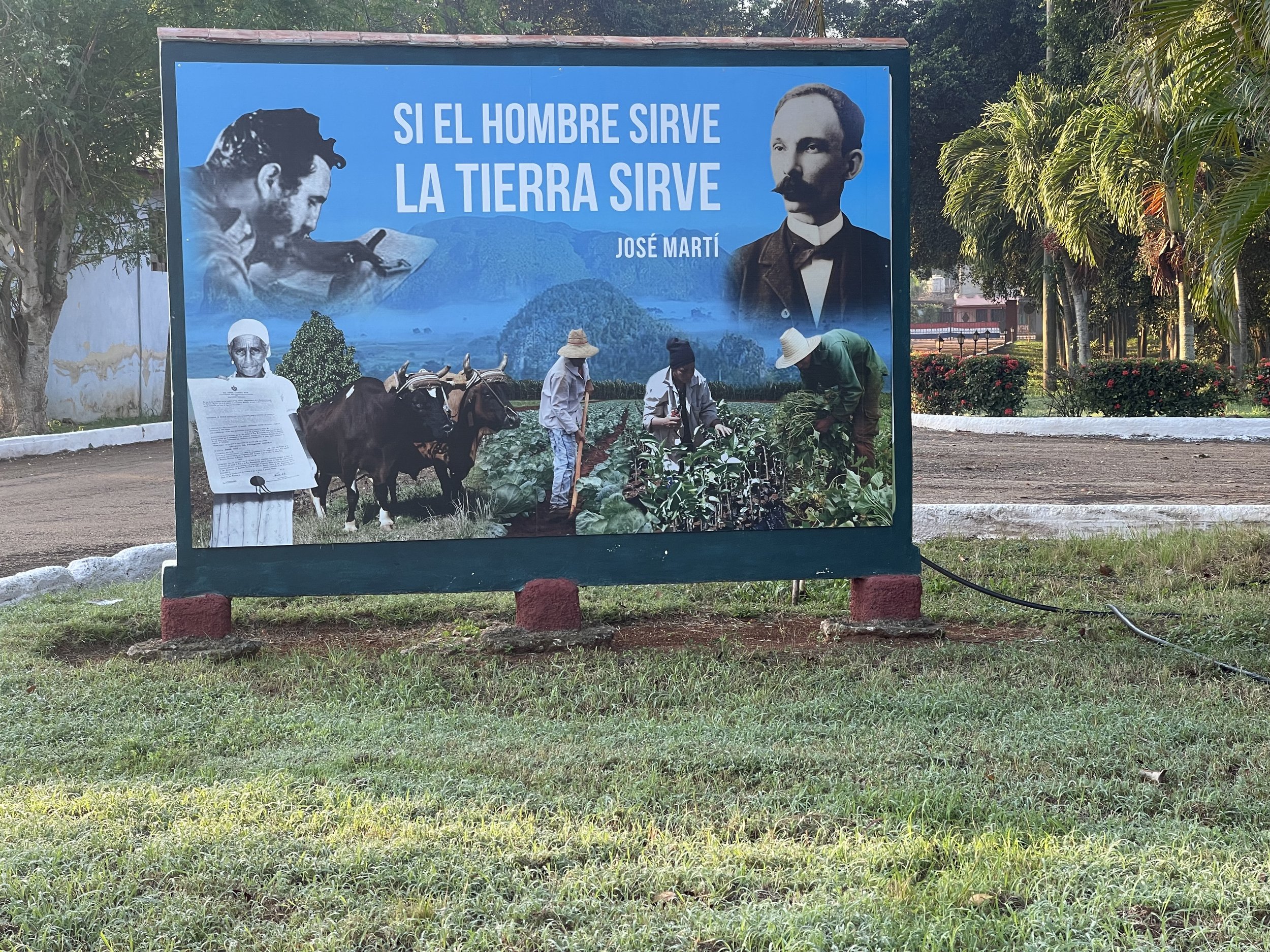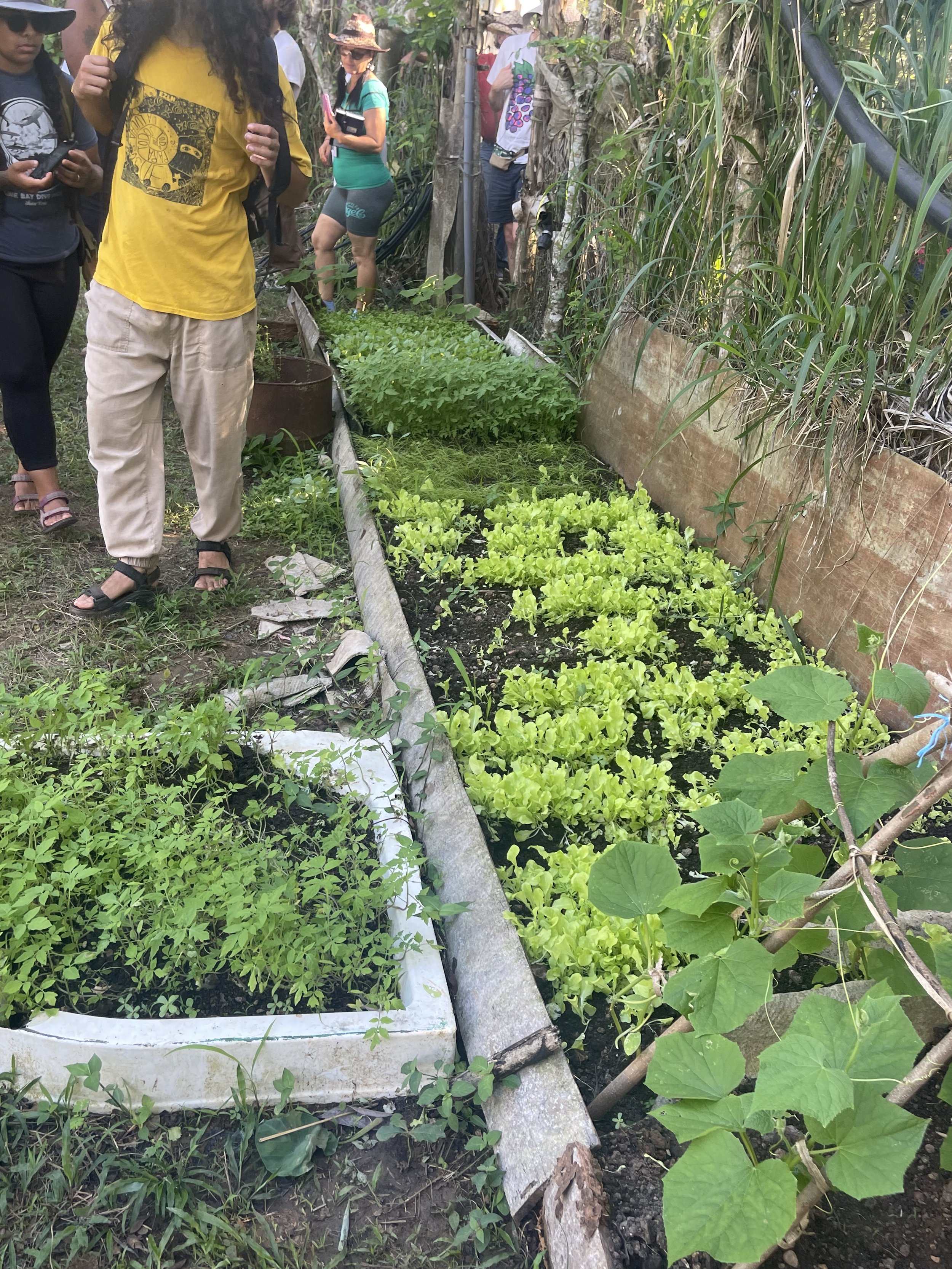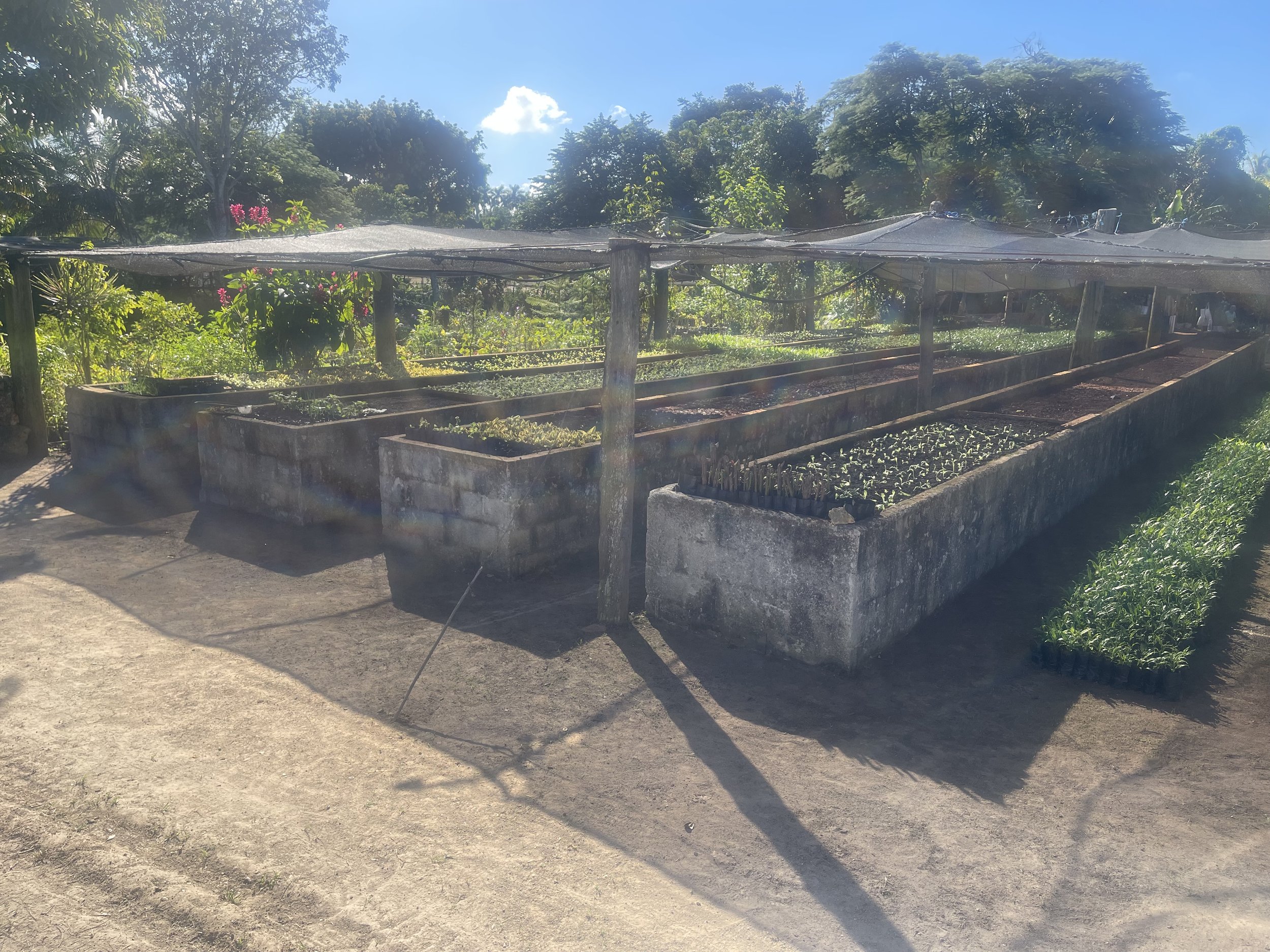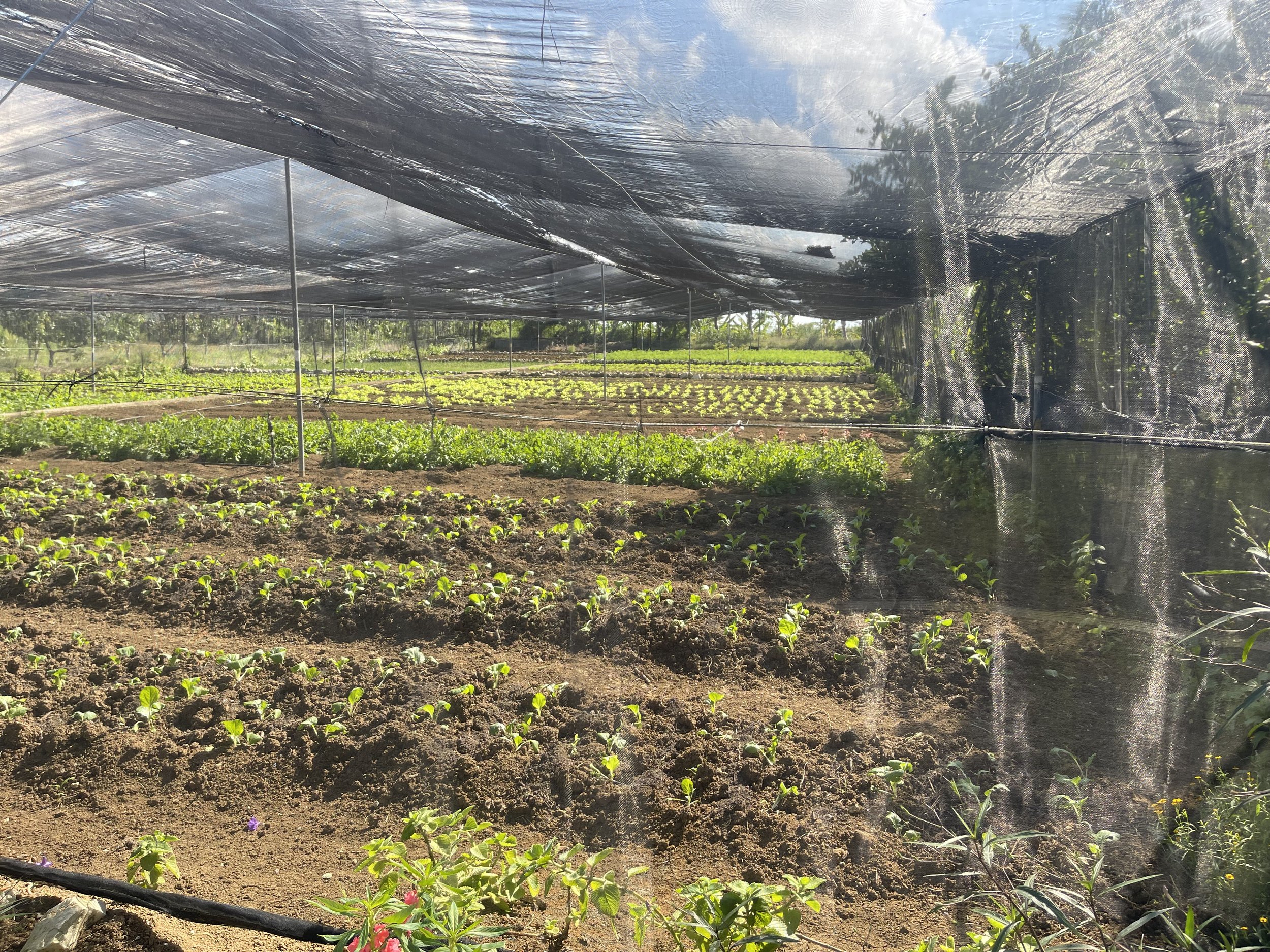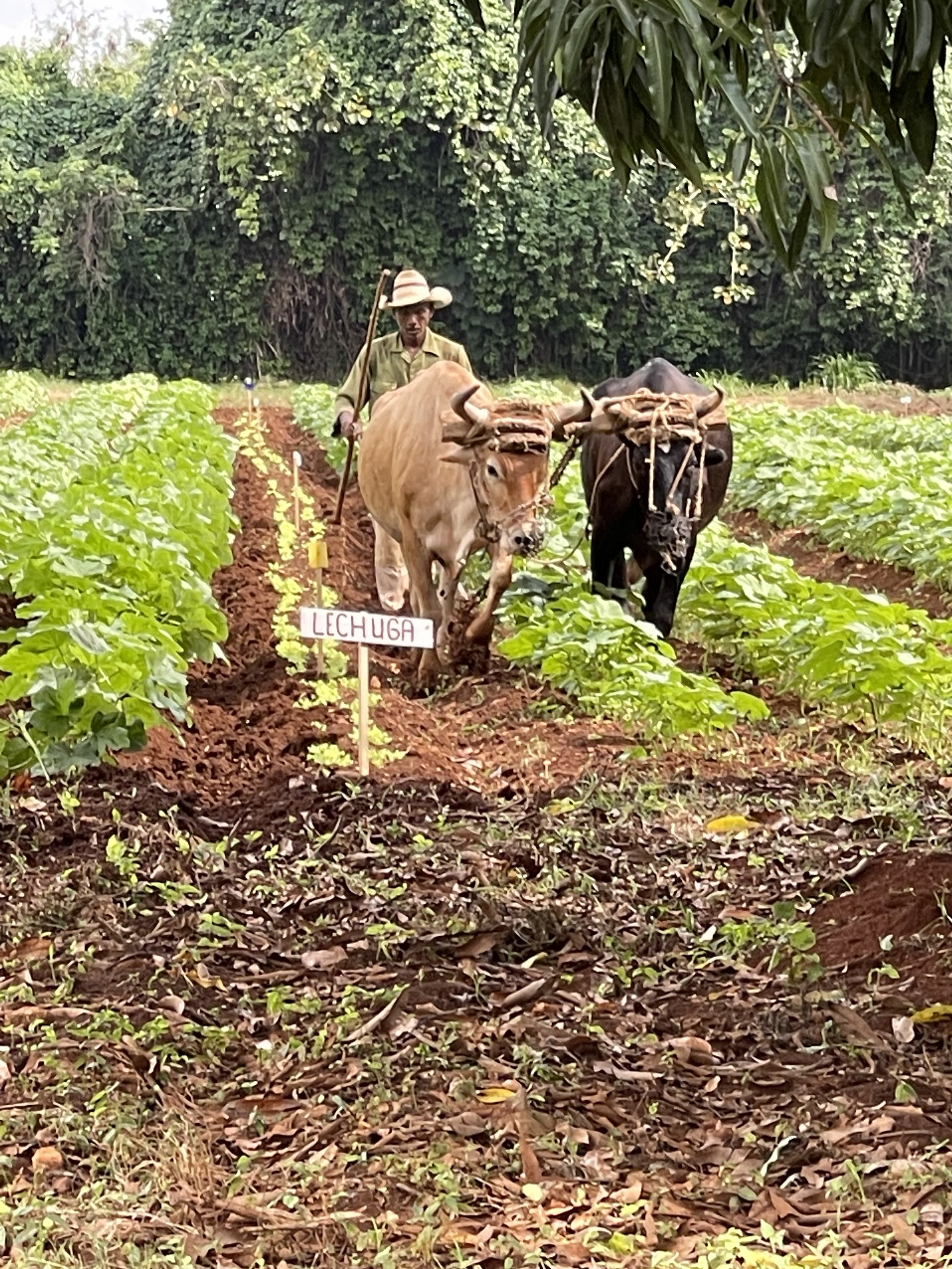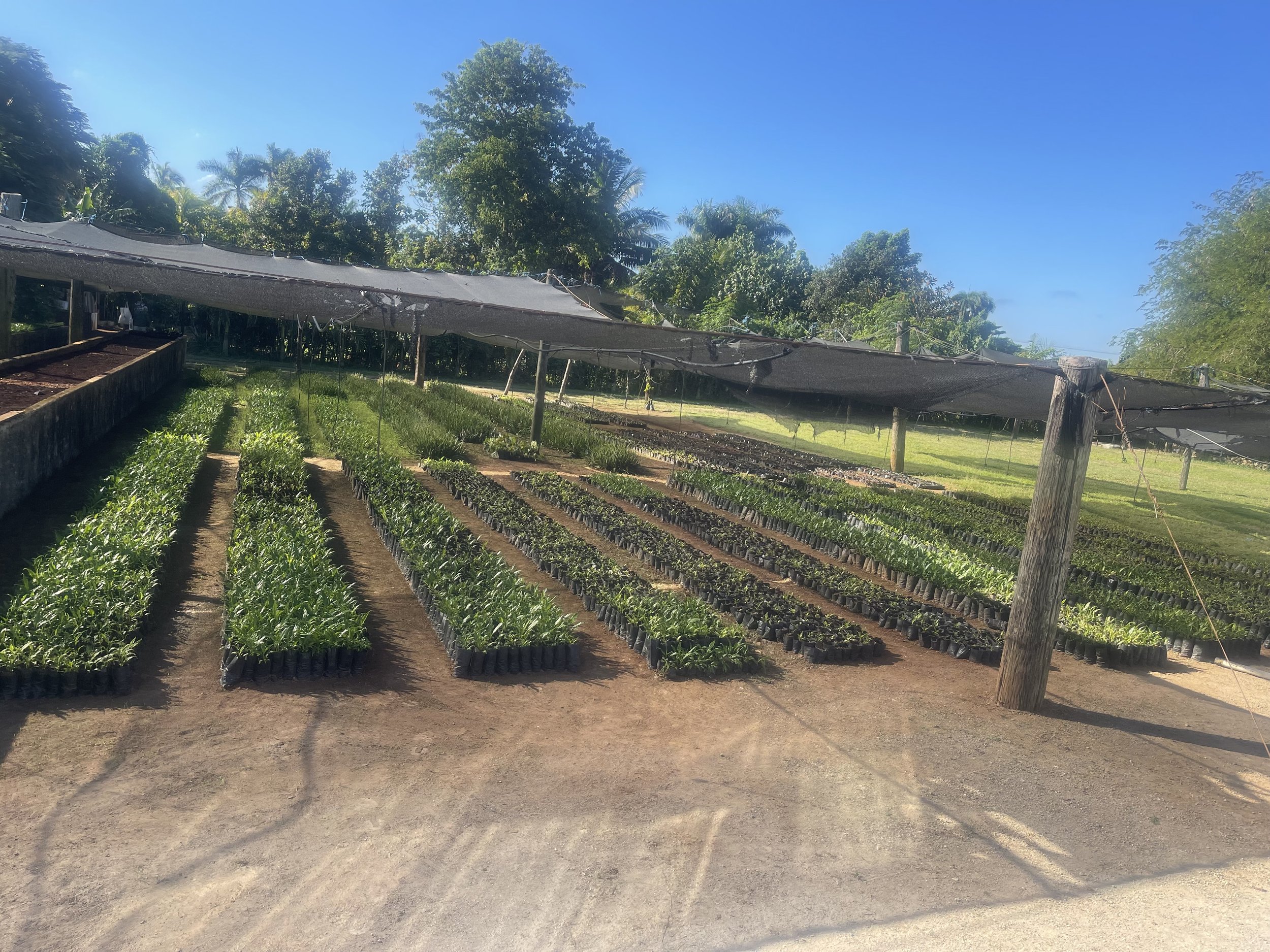‘Why I’m Doing This Work’: Amanda Hernandez on Learning from Cuban Farmers
Agraria Farm Manager Amanda Hernandez recently spent a week in Cuba as a participant in an international agroecology conference. The island is “beautiful,” she said, with open fields, mountains, and red clay soil, as seen here. (Photos provided by Amanda Hernandez)
By Audrey Hackett
For Agraria Farm Manager Amanda Hernandez, a week of agricultural learning in Cuba was a dream come true.
Food and farm issues are close to her heart. In addition to managing production on the Agraria Farm, Hernandez is currently pursuing her master’s degree in food and agriculture law and policy, with plans to attend law school. Last November, as a professional development opportunity, she took part in an international agroecology conference organized by Cuba’s National Association of Small Farmers. She was one of about 200 participants from the U.S. and Central and South America. She recently took time to talk with me about the experience, and presented highlights to Agraria staff in December.
The conference focused on agroecology, food sovereignty, nutritional education, and cooperativism. Participants visited a total of nine farms, three in Havana and three each in two nearby provinces. Cuban farmers shared their research on topics such as soil health, livestock feed, and different agroecology approaches. Agroecology is the application of ecological practices to farming.
“We were there to learn from Cuban farmers,” Hernandez explained. “How do they deal with food insecurity related to the blockade?”
Cuba has been under some form of U.S. economic embargo since 1958, with a nearly total embargo in place since 1962. The oldest and most comprehensive of U.S. economic sanctions, the embargo has dramatically limited Cuba’s trade partners and economic growth.
Community Solutions, Agraria’s predecessor organization, traveled to Cuba in 2003 to film the documentary, The Power of Community: How Cuba Survived Peak Oil. Through visits to organic farms (organipónicos), urban gardens, renewable energy sites, and reforestation projects, the documentary tells the story of how the island adapted to a radical reduction in energy supply when the Soviet Union collapsed and the U.S. tightened its embargo.
According to Hernandez, Cuban farmers are meeting the challenge of growing enough food to feed a country in which just 15% of food is imported. Government policies allow farmers to set prices on many goods and prevent supermarkets from undercutting them. Many people grow their own produce, and roadside markets are common.
Cooperatives, regenerative farming, cultural learning
Overall, Hernandez was most excited by Cuba’s system of cooperatives. Two main types pertain to farmers. Credit and services cooperatives help members and independent farmers access loans and technology. “Why go into millions of dollars of debt when your neighbor has a tractor?” Hernandez pointed out. Agricultural cooperatives are farms in which the land and major capital items are owned by farm workers themselves, with collective cultivation of the land.
“What a radical thought!” she said, with a laugh.
Hernandez was also inspired by Cuban farmers’ regenerative agricultural practices. One farm she visited managed livestock, grew produce, ran an onsite store selling value-added products, operated an onsite restaurant with a menu made up of food harvested or slaughtered on the farm, and was in the process of implementing a biodigester, a system that utilizes animal and human waste for fertilizer.
“They pretty much closed the cycle. There was nothing they needed to bring in from the outside,” she said.
In Havana’s urban farms, conference participants saw extensive use of raised beds and composting. Cuban farmers are pursuing these and other agroecology approaches because of their potential to mitigate climate change, Hernandez explained. These practices sit at the center of Cuban culture: even children are aware of agroecology and climate issues, she said.
Hernandez, who is bilingual in Spanish and English, enjoyed spending time with Cuban farmers and learning about Cuban people and society. “I got to hang out with the Cuban farmers — they took me under their wing,” she said. On the last farm visit of the conference, the host farmers made a big lunch for participants, including coconut water from freshly split-open coconuts.
“Everyone was very welcoming and generous,” she said.
Additionally, Hernandez was impressed by seeing lots of women in positions of leadership and power, especially Black women. She noted that Cuba provides a social safety net for women, including up to a year of paid maternity leave, and social supports for elders. “There’s a sense of unity [in Cuba], and being there for your fellow human beings. People coexist well,” she reflected.
‘It fed my soul’
She returned to Agraria with many lessons and ideas for experiments, including testing a Cuban method for building up soil that involves applying an anaerobic mixture to increase microorganism growth. She will compare her results to existing regenerative practices at Agraria. And she hopes to experiment with growing a tropical species here.
Hernandez is also interested in learning more about agricultural cooperatives that currently exist in Ohio. A fan of other types of cooperatives such as community-centerd grocery store Gem City Market in Dayton, she believes the cooperative model is especially powerful for small farms and BIPOC (Black, Indigenous, People of Color) communities.
Her week of learning in Cuba strengthened her already deep commitment to regenerative agriculture and the building of equitable food systems.
“It fed my soul and reminded me of why I’m doing this work,” she said.
*Audrey Hackett is editor of Agraria Journal.


